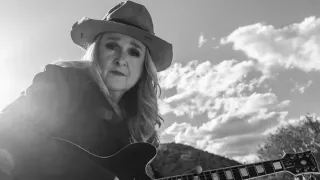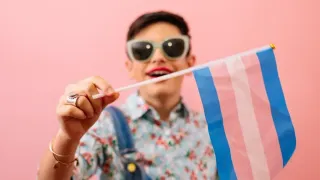October 28, 2015
On Domestic Violence Awareness Month, 'Coming Out' About Violence
READ TIME: 4 MIN.
By Rev. Irene Monroe
Within lesbian, gay, bisexual, transgender, and queer (LGBTQ)�communities of color, not�enough information nor statistics comes out about domestic violence. And neither does�attention, education, intervention and advocacy to prevent it.�
The topic lives so deeply on the "down low" I missed the signs in 2013 of domestic violence a close colleague was experiencing.
Every Monday morning Alex (not his real name) and I met for breakfast at our favorite dive in Harvard Square. I would notice visible bruises and cuts on his face, arms, and legs, but�assumed the black and blue marks were simply par for the course for a guy who enjoyed the rough-and-tumble adrenaline high that comes with playing�weekend scrimmage football.
I don't recall a time when Alex didn't have a knot on his head, a cut on his lip, a bite into his skin, welts on his arms or stitches. I did notice, however, over time that the teddy bear sweet guy who sat across the table from me with a smile as wide as the Charles River on Monday mornings looked beaten up rather than injured.
When I began asking Alex about his bruises he shrugged off my queries and talked about something else. Some Monday mornings then he would call me at the last minute to cancel or he wouldn't show up at all. One morning he called me to cancel telling me he was in Mount Auburn Hospital. His partner had stabbed him severely.
Statistics estimate that 25-33 percent of the LGBTQ population will�experience�some form of partner abuse or domestic violence in their lifetime.�The Inter-Personal Violence (IPV) study conducted in 2011 LGBTQ stated that LGBTQ communities of color are one of the demographic groups�experiencing�high incidents of domestic violence.
However, to obtain accurate�statistics�of how high IPV is in these�communities�are obfuscated by social stigmas and cultural taboos, not excluding also racism and other forms of oppressions and discriminations.
What also obfuscates obtaining�accurate�statistics�on how high IPV is in these�communities of color is that same-gender interpersonal violence is clouded with myths. For example, there is the myth that because the victim and the abuser are of the same gender and are also in a consensual sexual relationship, the battering that occurs starts out as a mutual act of S&M that somewhere during the course of the couple's sexual encounter the violence gets out of hand. Another myth is confusing same-gender sexual violence as homosexuality.
Sadly, because these myths still abound among many health care workers and law enforcers about what same-gender interpersonal violence is, LGBTQ�communities, particularly�those of color, are least likely to seek out services and resources.
Domestic violence is not only an act of physical violence; it can also be an act of sexual violence as well as mental violence such as threatening and stalking.
Because Alex wasn't out to his team, his partner -- a flamboyant effeminate male who couldn't simply be introduced as just a buddy without suspicion -- could only watch him play from a distance. Alex's partner's eyes turned into suspicion as he watched friendly innocent pats on the butt during games.�And he began stalking Alex. On the morning we were to meet, his partner accused him of an affair, and a fight ensued.�
There are at least several factors contributing to the ongoing uninterrupted incidents of domestic violence in communities of color.�One is�the dominant view that combines the social ills of race and violence to be the face of black males.�
Alex was seen several�times�for his scrapes, cuts and�bruises�in the same Emergency Room at the same hospital. However, with violence associated with young black males, the protocol and�treatment for domestic violence related injuries in inner-city hospitals for these patents are rarely introduced or followed up.�
Another is the�lack of police intervention. The police were called to the house several times by both Alex and his partner. If they came at all they were coming to the call of an interracial couple in distress. However, when the cops�looked at Alex -- African American, 6'2" and 200 pounds -- and then his partner -- white, 5'9" and 160 pounds -- judgment was rendered as to whom was the abuser.
Also, the�belief�that a�history�of racism trumps deserving a safe, healthy and violent-free relationship. In�non-interracial relationships many victims�oftentimes�will not�prosecute�their�partners for fear of community�abandonment,�isolation and scorn. Some rather rationalize the violence as the root cause of persistent micro and macro-levels of racism their partners encounter than making them�accountable for their uncontrolled actions.�But not all LGBTQs of color feel that way.
"People of color are expected to stay silent in the face of violence and as part of the LGBTQ community the silence becomes louder when law-enforcement, judicial and political figures ignore our calls for help. Not having power over our own behaviors and emotions causes us to exert dominating and violent attitudes within our community and toward our partners," Sean Smith wrote in his 2013 article,�"Imprisoned by Violence: Domestic Violence in the (Black) LGBT Community."�
�
Resources and services have to be made available to LGBTQ communities of color. And this is the time to reach out to us. Everyone deserves a safe, loving, healthy and violent-free relationship. LGBTQ communities of color have to be educated to embrace the fact that they do, too.
Rev. Irene Monroe, a�Public Theologian,�appears weekly on Boston Public Radio's Monday feature "All Revved Up!" A frequent guest on New England Cable Network News, Monroe is also�an Opinion writer for the Boston Globe,�a Huffington Post blogger and a syndicated religion columnist.�And she writes a weekly column in the Boston home LGBTQ newspaper�Baywindows.�






